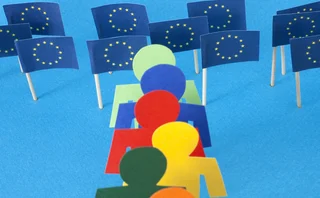
Time to rethink Korean structured products
New battle lines are being drawn in Korea’s structured products market. Succeeding in the market will require some fresh thinking
You can almost set your watch by blow-ups in Korea’s structured products market.
2015: a 40% drop in the Hang Seng China Enterprises Index (HSCEI) – to which many Korean autocall structures are linked – cost dealers in the market an estimated $300 million.
2018: US-China trade tensions put pressure on both the HSCEI and Korea’s Kospi equity index, hammering structured products and forcing French bank Natixis out of the market with a $290 million loss.
2020: Covid-19 volatility, combined with plummeting equity indexes, disrupts hedging strategies, resulting in significant market losses.
And yet, for all these market blow-ups, demand for structured products shows little sign of dissipating. This is because, in a world of low interest rates, individual Korean investors remain hungry for returns – and structured products remain the most attractive way of satisfying this demand.
The popularity of these products means that even the country’s two regulators have found it hard to take a robust stance against the riskiness embedded in the structures. At the end of last year, the Financial Supervisory Service and the Financial Services Commission considered a partial ban of autocallable products, but now appear to have backtracked, reportedly in light of opposition from product issuers.
Structured product blow-ups are good for neither balance sheet health nor market reputation
Nonetheless it is time for those on the market – structured products issuers (who tend to be the global banks), product distributors (mostly the local securities house) and the regulators (who are anxious to shield retail investors from harm) – to think about how to prevent further calamities in the future. Structured product blow-ups are good for neither balance sheet health nor market reputation.
This will require a new approach – though what such an approach will look like has not yet been worked out.
But those with a large presence on the market – which includes Societe Generale, BNP Paribas, UBS and Credit Suisse – need to devise a better way of approaching things, to make sure they can continue to maintain healthy returns there without suffering the kinds of losses that are seen every two or three years in the country.
It is difficult to say what this brave new world will look like, but the signs are that the global banks are taking this work seriously.
Diversification could help. Rather than linking all autocall products to a single index, issuers could link them to single-stock equities, which could go some way to offsetting losses from any sudden market collapse.
Such an approach has worked well in the Japanese structured products market, and Switzerland’s UBS is now banking on this changing. The bank has been pushing single-stock equity autocallables in the country since 2018, although they are yet to really take off: UBS says that as much as 98% of the Korean equity derivatives market is still represented by the index autocallable segment.
Market diversification could take other guises, too, and it is for each market player to work out what works best for them, according to their particular business needs. The competitive lines are now being redrawn in the sand.
Update, October 16, 2020: An earlier version of this article incorrectly attributed Societe Generale’s loss in 2020 to the bank’s structured product activity in Korea which is not the case (as confirmed by SG). This has now been amended.
Only users who have a paid subscription or are part of a corporate subscription are able to print or copy content.
To access these options, along with all other subscription benefits, please contact info@risk.net or view our subscription options here: http://subscriptions.risk.net/subscribe
You are currently unable to print this content. Please contact info@risk.net to find out more.
You are currently unable to copy this content. Please contact info@risk.net to find out more.
Copyright Infopro Digital Limited. All rights reserved.
You may share this content using our article tools. Printing this content is for the sole use of the Authorised User (named subscriber), as outlined in our terms and conditions - https://www.infopro-insight.com/terms-conditions/insight-subscriptions/
If you would like to purchase additional rights please email info@risk.net
Copyright Infopro Digital Limited. All rights reserved.
You may share this content using our article tools. Copying this content is for the sole use of the Authorised User (named subscriber), as outlined in our terms and conditions - https://www.infopro-insight.com/terms-conditions/insight-subscriptions/
If you would like to purchase additional rights please email info@risk.net
More on Our take
Hedge funds must race the clock to check their dealer-rule status
Working out whether a firm is caught by SEC registration requirement could take months
Filling gaps in market data with optimal transport
Julius Baer quant proposes novel way to generate accurate prices for illiquid maturities
Why Europe still awaits a private credit CLO
Tricky questions face managers that plan to launch the structure on the continent
The signs of tacit collusion in the dividend play trade
Game theory and real-world data point to a different understanding of how arbitrage in markets works
Decades of history says you can beat high inflation with quality
Factors such as momentum and value generally outperform the market irrespective of inflation, but new research suggests quality stocks are best when prices are rising rapidly
Esma faces tough task in implementing Emir 3.0
EU regulator must contend with tight timeframes and increasing workload without additional resources
Quants are using language models to map what causes what
GPT-4 does a surprisingly good job of separating causation from correlation
China stock sell-off will test securities firms’ risk managers
Regulatory measures to support stock market could add to risks facing securities sector
Most read
- Top 10 operational risks for 2024
- Top 10 op risks: third parties stoke cyber risk
- Japanese megabanks shun internal models as FRTB bites







